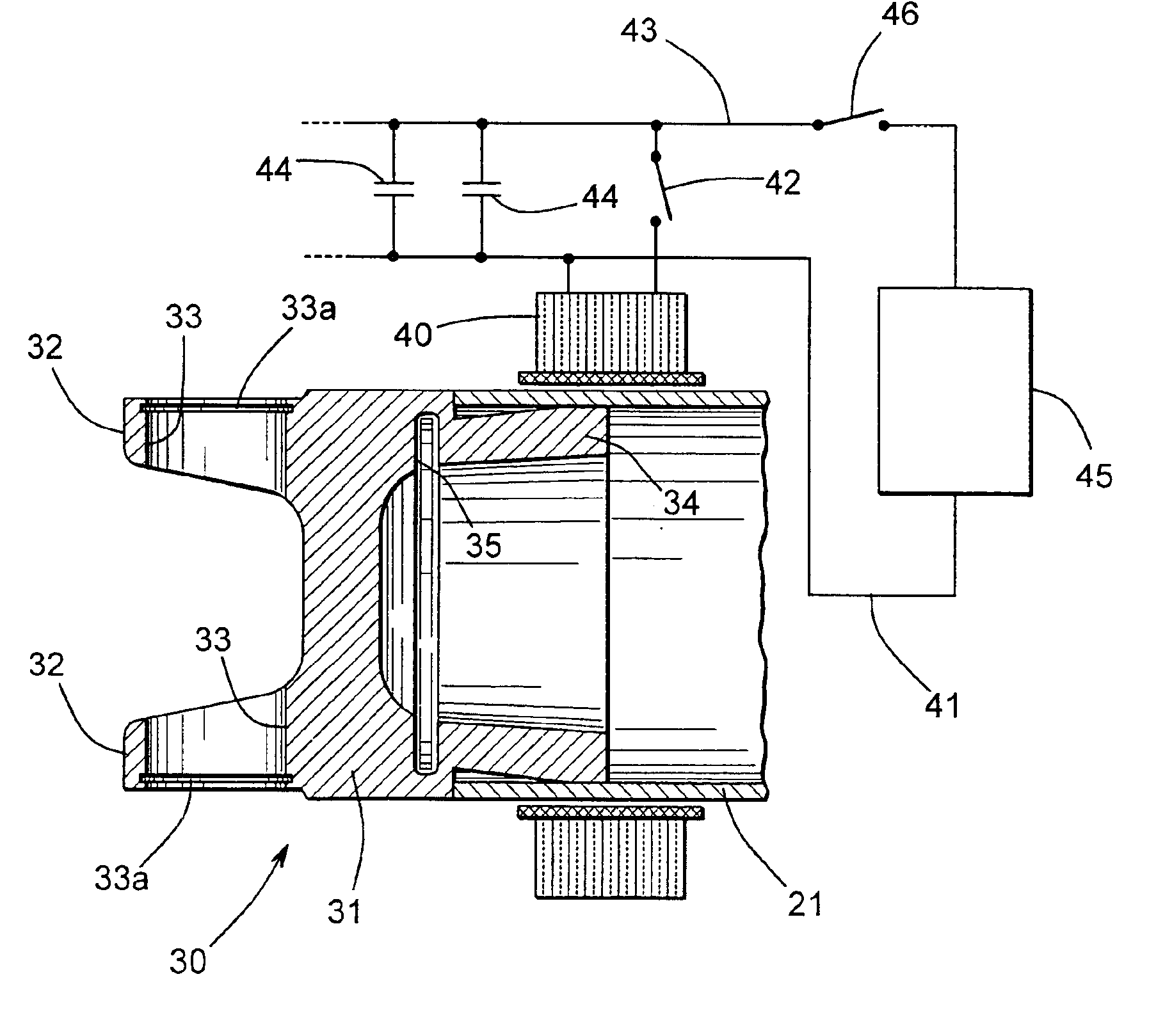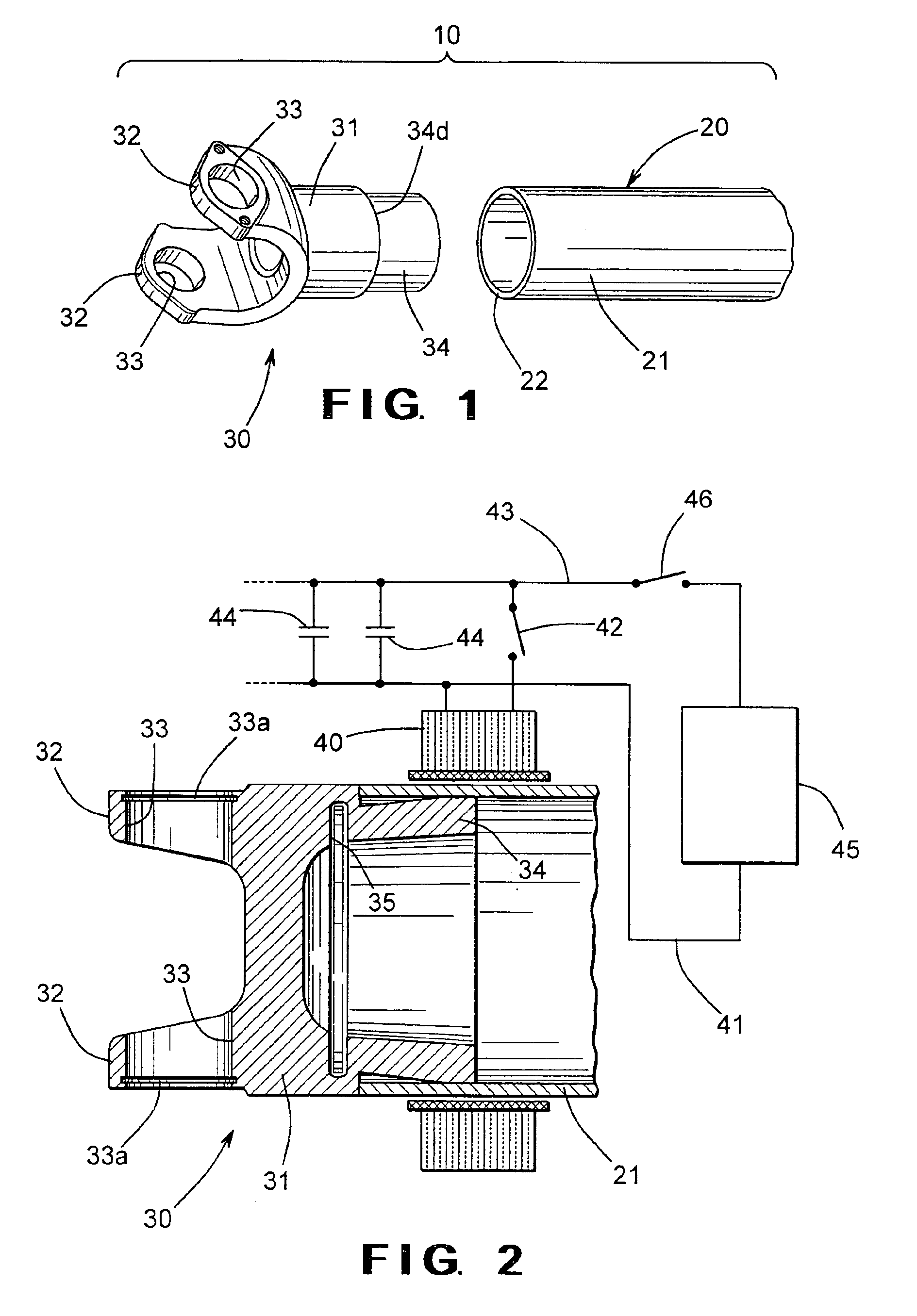Method for securing a yoke to a tube using magnetic pulse welding techniques
a technology of magnetic pulse and welding technique, which is applied in the direction of welding apparatus, manufacturing tools, other domestic objects, etc., can solve the problems of undesirable distortion and weaknesses of metallic components, coalescence of two metallic members, and conventional welding techniques that may or may not be performed with pressure,
- Summary
- Abstract
- Description
- Claims
- Application Information
AI Technical Summary
Benefits of technology
Problems solved by technology
Method used
Image
Examples
first embodiment
[0025]Referring now to the drawings, there is illustrated in FIGS. 1 and 2 a portion of a vehicular driveshaft assembly 10 that includes a driveshaft tube, indicated generally at 20, and an end fitting, indicated generally at 30. Although this invention will be described and illustrated in the context of securing an end fitting to a driveshaft tube to form a portion of a vehicular driveshaft assembly, it will be appreciated that the method of this invention can be used to secure any two metallic components together for any desired purpose or application.
[0026]The illustrated driveshaft tube 20 is generally hollow and cylindrical in shape and can be formed from any desired metallic material, such as 6061 T6 aluminum alloy, for example. Preferably, the driveshaft tube 20 has an outer surface that defines a substantially constant outer diameter and an inner surface that defines a substantially constant inner diameter. Thus, the illustrated driveshaft tube 20 has a substantially cylindr...
third embodiment
[0042]To minimize the amount of additional electrical energy to perform the magnetic pulse welding operation, a groove (shown in phantom at 62 in FIGS. 8 and 9) can be formed in the step 60 on the end fitting 30″. The groove 62 can extend continuously about the circumference of the end fitting 30″ or only partially thereabout. Furthermore, the groove 62 can be embodied as a plurality of discontinuous recesses formed about the circumference of the end fitting 30″. The purpose of the groove 62 is to mechanically weaken the step 60, thereby allowing the step 60 to be more easily deformed when the magnetic pulse welding operation is performed. Such deformation will minimize the amount of additional electrical energy to perform the magnetic pulse welding operation, while still providing the step 60 for better containment of the air and cumulative flow in the annular space 61.
[0043]FIG. 10 is an enlarged sectional elevational view similar to FIG. 3 showing a fourth embodiment of the end f...
PUM
 Login to View More
Login to View More Abstract
Description
Claims
Application Information
 Login to View More
Login to View More - R&D
- Intellectual Property
- Life Sciences
- Materials
- Tech Scout
- Unparalleled Data Quality
- Higher Quality Content
- 60% Fewer Hallucinations
Browse by: Latest US Patents, China's latest patents, Technical Efficacy Thesaurus, Application Domain, Technology Topic, Popular Technical Reports.
© 2025 PatSnap. All rights reserved.Legal|Privacy policy|Modern Slavery Act Transparency Statement|Sitemap|About US| Contact US: help@patsnap.com



